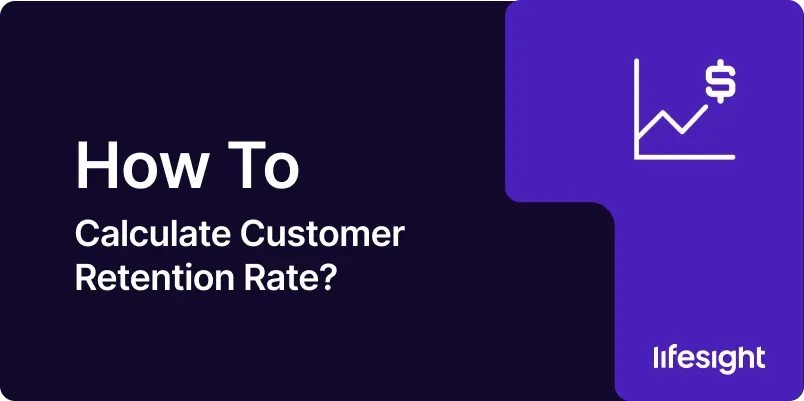
Short Description
Customer Retention Rate (CRR) is a key performance indicator that measures the percentage of customers a business retains over a specific period. It’s crucial for assessing customer loyalty, the effectiveness of retention strategies, and overall business health.
Introduction
In the competitive landscape of modern business, acquiring new customers is often more costly than retaining existing ones. This is where Customer Retention Rate (CRR) becomes a vital metric for businesses across various industries. Understanding and optimizing your CRR can lead to increased customer loyalty, higher profitability, and sustainable business growth. This guide will walk you through the intricacies of CRR, from its basic calculation to its strategic implications and limitations.
Definitions of Key Terms
Before we delve into the calculation of Customer Retention Rate, let’s define some key terms:
- Customer Retention Rate (CRR): The percentage of customers a business retains over a specific period.
- Churn Rate: The percentage of customers who stop using a company’s products or services during a given time period.
- Existing Customers: Customers who have made a purchase or used a service before the period being measured.
- New Customers: Customers acquired during the period being measured.
- Active Customers: Customers who have engaged with the business (e.g., made a purchase, used the service) within a specified timeframe.
- Customer Lifetime Value (CLV): The total worth of a customer to a business over the whole period of their relationship.
- Cohort Analysis: A method of analyzing groups of customers who share common characteristics over a specific period.
- Net Promoter Score (NPS): A metric used to measure customer experience and predict business growth.
- Customer Acquisition Cost (CAC): The cost associated with convincing a potential customer to buy a product or service.
- Loyalty Program: A marketing strategy designed to encourage customers to continue to shop at or use the services of a business associated with the program.
The Formula to Calculate Customer Retention Rate
The basic formula for calculating Customer Retention Rate is:
CRR = ((E – N) / S) x 100%
Where:
E = Number of customers at the end of the period
N = Number of new customers acquired during the period
S = Number of customers at the start of the period
This formula gives you the CRR as a percentage.
Step-by-Step Guide to Calculating CRR
- Define Your Time Period: Decide on the period over which you want to measure CRR (e.g., monthly, quarterly, annually).
- Determine Starting Customers (S): Count the number of customers you had at the beginning of the period.
- Count New Customers (N): Tally the number of new customers acquired during the period.
- Count Ending Customers (E): Determine the total number of customers at the end of the period.
- Apply the Formula: Use the formula CRR = ((E – N) / S) x 100%
- Interpret the Result: The resulting percentage is your Customer Retention Rate.
Example Illustrating the CRR Formula
Let’s walk through a practical example to illustrate how to calculate CRR:
Suppose you’re running an e-commerce business and want to calculate your quarterly CRR. You have the following data:
- Customers at the start of the quarter (S): 1000
- New customers acquired during the quarter (N): 250
- Customers at the end of the quarter (E): 1100
Applying the CRR formula:
CRR = ((1100 – 250) / 1000) x 100% = (850 / 1000) x 100% = 85%
This means you retained 85% of your existing customers during the quarter.
What Customer Retention Rate is Used For and Why It’s Important
CRR is a crucial metric for several reasons:
- Business Health Indicator: It provides insight into the overall health and sustainability of a business.
- Customer Satisfaction: High retention rates often indicate satisfied customers.
- Profitability Assessment: Retained customers are typically more profitable than new acquisitions.
- Strategy Evaluation: It helps evaluate the effectiveness of customer retention strategies.
- Predictive Analysis: CRR can help predict future business performance and growth.
- Resource Allocation: It guides decisions on balancing resources between customer acquisition and retention efforts.
- Competitive Advantage: Companies with high retention rates often have a strong competitive advantage.
Where CRR Calculation is Applied
CRR calculations are applied across various business contexts:
- Subscription-Based Services: Such as streaming platforms, SaaS companies, and gyms.
- E-commerce: Online retailers use CRR to measure repeat purchases.
- Financial Services: Banks and insurance companies track customer retention closely.
- Telecommunications: Mobile and internet service providers use CRR to assess customer loyalty.
- Healthcare: Hospitals and clinics measure patient retention.
- Education: Schools and online learning platforms track student retention.
- B2B Services: Professional service firms monitor client retention.
- Hospitality: Hotels and restaurants use CRR to measure repeat visits.
- Software and Technology: Tech companies track user retention for their products and services.
- Retail: Brick-and-mortar stores use CRR to measure customer loyalty.
Limitations of Customer Retention Rate
While CRR is a valuable metric, it has several limitations:
- Doesn’t Measure Customer Value: A high CRR doesn’t necessarily mean high-value customers are being retained.
- Time Sensitivity: CRR can fluctuate significantly over different time periods.
- Doesn’t Account for Customer Behavior: It doesn’t provide insights into why customers stay or leave.
- Can be Misleading for New Businesses: New companies might see artificially high or low rates.
- Doesn’t Consider Customer Segments: Overall CRR might hide variations between different customer segments.
- Ignores Partial Churn: It doesn’t account for customers who reduce their engagement or spending.
- Definition of “Active Customer” Can Vary: Different definitions can lead to different CRR calculations.
- Doesn’t Reflect Acquisition Efforts: A company could have a high CRR but struggle with acquiring new customers.
- Can be Manipulated: Companies might artificially inflate CRR through contractual lock-ins.
- Industry-Specific Variations: What’s considered a good CRR can vary widely across industries.
Factors Impacting Customer Retention Rate
Several factors can significantly impact your CRR:
- Product or Service Quality: Consistently high quality often leads to better retention.
- Customer Service: Excellent customer support can significantly improve retention.
- User Experience: Easy-to-use products or services tend to have higher retention rates.
- Price and Value Perception: Customers are more likely to stay if they perceive good value for money.
- Brand Loyalty: Strong brand affinity can lead to higher retention.
- Competitive Landscape: Strong competition can negatively impact retention rates.
- Customer Onboarding: Effective onboarding can set the stage for long-term retention.
- Personalization: Tailored experiences can increase customer loyalty.
- Communication: Regular, relevant communication can keep customers engaged.
- Loyalty Programs: Well-designed loyalty programs can incentivize customers to stay.
Other Strategies for Assessment
While CRR is crucial, it should be used alongside other metrics for a comprehensive assessment:
- Churn Rate: The flip side of retention, measuring how many customers you’re losing.
- Customer Lifetime Value (CLV): Estimates the total value a customer brings over their entire relationship with your business.
- Net Promoter Score (NPS): Measures customer satisfaction and likelihood to recommend.
- Customer Satisfaction Score (CSAT): Directly measures customer satisfaction with a product or service.
- Repeat Purchase Rate: Measures the percentage of customers who make additional purchases.
- Time Between Purchases: Analyzes the frequency of customer transactions.
- Customer Effort Score (CES): Measures how much effort a customer has to exert to get an issue resolved or a request fulfilled.
- Revenue Churn: Measures the rate at which revenue is lost due to churned customers.
- Expansion Revenue: Measures additional revenue generated from existing customers.
- Product Return Rate: For businesses selling physical products, this measures customer satisfaction and product quality.
The Relationship Between Customer Retention Rate and Other Metrics
Understanding how CRR relates to other metrics provides a more comprehensive view of business performance:
- CRR and Customer Acquisition Cost (CAC): High retention rates can justify higher acquisition costs.
- CRR and Customer Lifetime Value (CLV): Higher retention typically leads to higher CLV.
- CRR and Churn Rate: These are inversely related; as one goes up, the other goes down.
- CRR and Net Promoter Score (NPS): There’s often a positive correlation between these metrics.
- CRR and Revenue Growth: Improved retention usually contributes to revenue growth.
- CRR and Profitability: Higher retention rates often lead to increased profitability.
- CRR and Customer Satisfaction: Satisfied customers are more likely to be retained.
Benefits of Calculating Customer Retention Rate
Regularly calculating and analyzing CRR offers numerous benefits:
- Forecasting: Helps predict future revenue and growth.
- Strategy Refinement: Informs customer retention strategies and initiatives.
- Resource Allocation: Guides decisions on investing in retention vs. acquisition.
- Benchmarking: Allows comparison with industry standards and competitors.
- Early Warning System: Can alert businesses to potential problems before they escalate.
- Customer Insight: Provides a high-level view of customer satisfaction and loyalty.
- Financial Planning: Assists in budgeting and financial projections.
- Product Development: Can inform product improvements and new feature development.
- Marketing Effectiveness: Helps evaluate the long-term impact of marketing efforts.
- Operational Efficiency: Identifying and retaining customers can be more cost-effective than constantly acquiring new ones.
Conclusion
Customer Retention Rate is a powerful metric that provides crucial insights into the health of your customer relationships and, by extension, your business as a whole. By mastering the calculation and interpretation of CRR, businesses can make data-driven decisions to improve customer loyalty, increase profitability, and drive sustainable growth.
However, it’s important to remember that while CRR is valuable, it should not be used in isolation. Combining CRR with other performance metrics, considering its limitations, and placing it in the broader context of your business goals will provide a more comprehensive view of your customer relationships and overall business performance.
As markets evolve and customer expectations change, so too will the strategies for calculating and optimizing customer retention. Staying informed about new technologies, changing customer behaviors, and emerging best practices will be crucial for maintaining a competitive edge in customer retention.
By regularly calculating, analyzing, and acting on CRR data, businesses can ensure they’re nurturing valuable customer relationships, maximizing customer lifetime value, and building a loyal customer base that serves as a foundation for long-term success.
Free essential resources for success
Discover more from Lifesight















